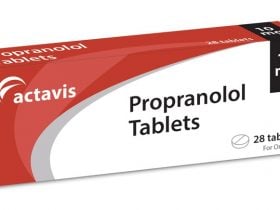Why Does Precipitated Withdrawal Happen and How Long Does it Last?

It is good if you can understand what is happening precipitated withdrawal, understanding the concept behind it will help to visualize locks and keys. You have opioid receptors all over your body but mainly in your brain and spinal cord.
An opioid agonist [4], which includes things like morphine, heroin, and fentanyl, is like a key to the locks of opioid receptors. Using it slides into the locks and activates or unlocks the receptor therefore triggering a cascade of signals in the body that produces the effect associated with opioids, such as pain relief, euphoria, and warmth.
The opposite of opioid agonists known as opioid antagonists [5] which include naltrexone and naloxone work in the opposite direction. They simply occupy the lock and don’t open it, making it unusable to opioid agonists (including those already in your system) for several minutes or hours. When one is physically dependent on opioids, the sudden loss of signals from the opioid receptors triggers the symptoms of precipitated withdrawal.
You should know that not only opioid antagonists can cause precipitated withdrawal. Drugs like buprenorphine can also cause symptoms of precipitated withdrawal. That is because buprenorphine falls into the third group known as partial opioid agonists. Partial agonist sits on the receptor, occupying it and preventing anything else from activating it. But they only partially activate the receptor. You can liken it to putting a key into a lock and only turning it half way.
If you are dependent on opioids, this partial decrease in signaling from the opioid receptors can still be enough to cause precipitated withdrawal if not timed properly.
Without some kind of intervention, the symptoms of precipitated withdrawal can last for a while, usually anywhere from several hours to a couple of days. How long precipitated withdrawal lasts depends on several factors such as one’s general health, the body’s metabolism and history of opioid use.













